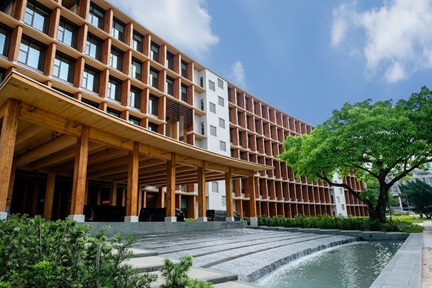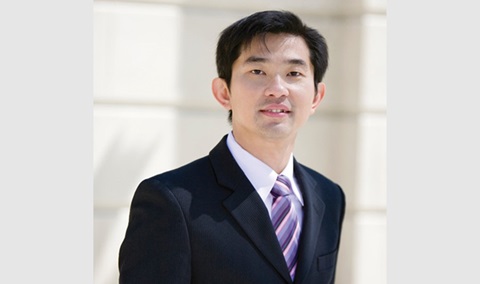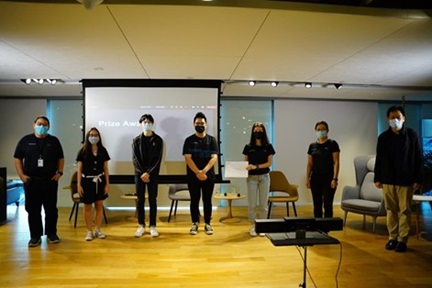Lessons from the business of tuition: Are we paying attention?
Singapore's educational rat race feeds a booming trade in outside-school learning, that also raises stress and inequality.
While Singapore's education system has undergone several reforms in a bid to take the pressure off students and parents, through a shift away from an overemphasis on grades, the educational rat race has shown little signs of abating. Parents continue to cough up a significant portion of their household income on tuition to ensure their children keep up with the rigour.
Average household spending on tuition went up from S$79.90 per month in 2012/2013 to S$88.40 per month in 2017/2018, show figures from the household expenditure survey, which is conducted once every five years by the Singapore Department of Statistics. And spending on tuition can go up to thousands a month for families with several school-going children.
The never-ending pursuit for better grades has spurred the growth of Singapore's tuition sector which has ballooned into a billion dollar industry. Excluding the income of private tutors who do not register as business entities, total revenue in the industry rose from S$1.5 billion in 2017 to S$1.68 billion in 2019, show figures from data-analysis firm Handshakes based on information from the Accounting and Corporate Regulatory Authority.
Against this backdrop, China's latest crackdown on its US$100 billion out-of-school education sector reignited the debate of whether Singapore's tuition industry .Çô often faulted for creating an unlevel playing field for the young .Çô should be reined in as well.
China had, in a shocking move, implemented sweeping new rules to clamp down on its booming private tutoring industry in hopes of promoting fair education and boosting the country's birth rate by lowering family living costs.
Private companies in China are now barred from teaching the school syllabus during weekends and vacations, and from making a profit. Meanwhile, listed companies will not be allowed to acquire or invest in other services in the education sector.Private education companies, which investors had bet billions on in recent years, were left reeling from the aftermath.
The share prices of three big online tutors listed in the United States .Çô TAL Education, New Orient and Gaotu .Çô tumbled following the announcement, with billions of dollars worth of public and private capital ploughed into the sector being wiped out in an instant.
Unlevel playing field
In Singapore, increasing household incomes and the desire of parents to see their children stay ahead of the game has fuelled demand for tuition, say experts and industry players.
"Academic performance plays an important role in determining admissions to selective schools and universities, (so) parents want their children to do well academically," says Kelvin Seah, a senior economics lecturer at the National University of Singapore (NUS).In the past, parents tend to engage tutors for subjects their children are weaker at. But this is no longer the case.
Kelvin Hong, who owns and teaches at The Economics Tutor tuition centre, has seen enrolment grow by about 35 per cent over the past five years. "Students who aren't weak would also seek out my services as they have very high aspirations such as entering top universities, securing admission into highly competitive programmes like medicine and law, or obtaining scholarships," he says.
And parents are now more willing to fork out money to pay for "premium quality", he adds.
NUS sociologist Tan Ern Ser says that while tuition would not widen the income gap, it would reinforce the existing class structure. That said, access to tuition is not the only factor that can contribute to promoting social mobility, he adds.
But since tuition fees could vary significantly, those with a higher disposable income will be at an advantage.
Given that there is a wide spectrum of tutors in Singapore with varying levels of quality, those that are more effective tend to charge more, says Mr Seah."So those from richer families would be better able to afford the more effective tutors," he adds.
Progressive changes
To be sure, there have been efforts by the government to address the impact of tuition on students.
The recent overhaul of the Primary School Leaving Examination (PSLE), perceived as an intensely competitive, high-stakes national examination, aims to reduce the fine differentiation of students' examination results at a young age. A wider banding PSLE results system was introduced.
Among other recent measures include the scrapping of weighted assessments and examinations for Primary One and Two students, expanding direct school admission to secondary schools, as well as aptitude-based admissions to the Institute of Technical Education, polytechnics and universities.
"The education system is becoming more child-centric, less stigmatising, and less examination-oriented, and there are multiple pathways to success to cater to the different aptitudes and ability levels of students," says Mr Tan.
While this is not to argue that the nation now has a level playing field, there are attempts to make the playing field a more equitable one for students from low socioeconomic status backgrounds, he adds.
Mr Seah says that he is "pretty sure" that the recent changes in the education system will eventually help to reduce the demand for tuition.
This, however, will take time, he says. "The extent to which tuition rates are impacted will only be known in a few years after students and parents have had sufficient time to adjust their behaviours and after data on tuition rates have been collected," he adds.
There is also a limit to how much the state can do, says Mr Seah.
"Richer families may be able to provide their children more cultural capital .Çô opportunities to travel abroad, greater networks, greater transfer of knowledge and so on. The best that the state can do is to lift those at the bottom up, but it is impractical to cap the potential of those at the top," he says.
For the time being, the industry is still seeing a steady demand for tutoring services. Math private tutor Liu Xin Yi, says that efforts to make the education system less grade-oriented in recent years has "not really affected the demand for tuition" given that the expectations that parents have of their children largely remain the same.
The shift away from grades may in fact result in an increase in demand for tuition, as sending children for extra classes might be a way to gauge how their children fare against their peers, says Ms Liu, who runs tutoring service Math World from her home.
Business at Math World has grown by about 50 per cent, in part due to the pandemic. More time can now be allocated to academics since many activities have been halted to curb the spread of the virus, she says.
Putting a lid on tuition
Despite the robust demand for tuition, Education Minister Chan Chun Sing says introducing regulations to the private tuition and enrichment industry to address unnecessary reliance on tuition is "unlikely to be effective, if the underlying reasons why students and parents take up tuition are not addressed". This is in response to a Parliament question from Associate Professor Jamus Lim, MP for Sengkang GRC on Monday.
Experts agree that following in the footsteps of China to ban tuition completely will be ineffective.
"A ban will not eliminate tuition. It will continue to exist, with the only difference being that much of these activities will now be pushed underground and may exist on a somewhat smaller scale than before," says Mr Seah.
In China, for instance, the crackdown has forced tutors to go underground, making their services even more expensive and exclusive. Similarly, South Korea had in 1980 banned tuition, a move which yielded little result as a black market for private tutors emerged, allowing tutors to charge even higher fees. The ban was subsequently lifted in 2000.
Perks of tuition
Those in the industry say that tuition should not be made a scapegoat for academic pressure or inequality.
Apart from tuition, those who are more well-to-do are generally able to get better access to other resources, including enrichment classes from a young age, says Mr Hong.
While these are not classified as tuition classes, they are often academic-related, he adds.
To Iman Usman, co-founder and chief operating officer of Indonesian edtech startup Ruangguru, tuition is not the root cause of academic pressure. He adds that tutoring or online teaching can in fact play a role in narrowing the gaps of inequality.
Ruangguru had, for instance, offered free online courses for students and teachers who had to stay at home during the Covid-19 outbreak in Indonesia.
More companies and individuals have also in recent times stepped in to lend a hand. Mr Hong occasionally makes "a small contribution" by providing discounted fees and waivers to those from lower income families.
This year, The Economics Tutor offered free tuition to some 20 eligible students from low-income families (gross monthly household income per capita of not more than S$625).
PSB Academy had in August set aside S$100,000 to provide weekly tuition to underprivileged youths who are taking their N and O-level examinations this year.
And it can't be denied that tuition to promote learning can be helpful to students. Individual and small group tuition classes can provide a more personalised approach to learning and teaching, as Ms Liu says. Conversely, tuition can be ineffective if the tuition group is too huge or if the tutor is using a lecture-based approach, she adds.
Tuition centres give lift to retail sector
THE real estate sector has, over the years, become a beneficiary of the flourishing tuition industry as more education providers set up shop in retail malls. And these tuition centres have played a role in cushioning the impact of the retail sector's decline amid the rise of e-commerce.
Ethan Hsu, head of retail at Knight Frank Singapore, estimates that space leased by tuition centres in retail malls has increased about 5-10 per cent over the last decade, as landlords "adopt a more welcoming stance towards these concepts in order to enhance the trade mix and bring in more families to the mall".
In the past, tuition and education centres may not be the preferred tenants for malls due to relatively lower rents from such trades, says Mr Hsu. Retail landlords would instead prefer to have "sought-after retail brand names" in their spaces, he says.
But retailers are now looking to give people more reason to head to malls by offering services or experiences that cannot be accessed online.
Retail sales in July grew a marginal 0.2 per cent year on year, easing from the double-digit growth seen in the previous two months as low-base effects wear off, data from the Department of Statistics Singapore show.
"Landlords have begun to review their trade mix palette to beef up the lifestyle and service components as these trades will boost footfall numbers since the experience they provide cannot be replicated online," says Mr Hsu.
Tuition centres and education providers can draw and promote regular footfall, says Lynda Wee, adjunct associate professor of marketing at Nanyang Business School.
If a mall positions itself as a go-to learning mall such as United Square, it could also attract tenants such as bookshops, education, toys and kids apparel, she says. United Square houses some 12 education centres, including household names such as The Learning Lab and Hua Language Centre. These centres are essentially like anchor clients.
If they are able to draw higher footfall, landlords can potentially demand higher rents from incoming tenants, says Kapil Tuli, marketing professor at the Singapore Management University's (SMU) Lee Kong Chian School of Business.
"If a family has a child enrolled in a tuition class that is not going to last over two hours, the idea then is that they will spend more time at the mall to do their groceries or (dine at) food and beverage establishments," says Mr Tuli.
Tuition centre operators also stand to benefit from housing their businesses in suburban malls that are easily accessible and near residential homes.
Source: The Business Times







